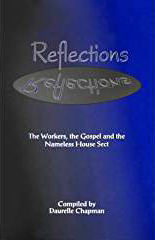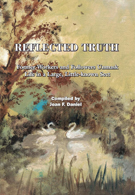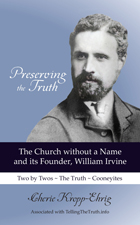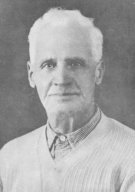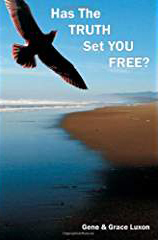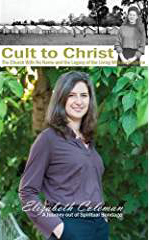THE FAROE ISLANDS
NOTE: The Faroe Islands are a Danish possession. Sometimes they have been listed separately, and other times included in Denmark lists.
Eighteen (18) little mountain islands in the North Atlantic between Scotland , Norway and Iceland (120 km North-South and 75 km East-West)
Around 1924-25 , two young ladies from Faroes listened to the gospel in Engl and ( London), where they were working . They got in contact with Peter Svinth from Denmark , who also met the gospel in England in 1919 and then went back to preach the gospel to his countrymen. These ladies asked Peter to come to the Faroes, where they were sure that some of their relatives would accept the truth …
In that way Peter Svinth and Kristoffer Kristensen from Denmark and Norway went to the Faroes in 1925, and after some months a fairly big church was established on the Southern island, called Suduroy.
Some of the younger friends left the island to find work and settled in Denmark in the late fourties after the war, and we are glad to still have some of them and the ir families with us in Denmark even today .
In 1941 - 42 – 43, Rasmus Prip came on visits from Iceland . (Because of the war, there was no connection with Denmark then - and no workers on the Faroes). When the war started, Rasmus was on his way from Canada to Denmark - and so ended up in Iceland. He got in contact with Faroese people working in Iceland , and then was invited to come with them to Faroes. Rasmus had a good mission on one of the Western islands, and a church was formed in Midvágur.
Almost every year since 1925 there has been workers on Faroes, and the gospel has been preached in almost every place and is well known by the people .
George Ferguson from Scotland laboured on the Faroes in the fifties. With various companions he had some good missions . He was kind of a pioneer and came out to some the sma ll er islands and settlements...
To get out to their mission in the small village of Dalur on Sandoy, George and Lloyd Haugen had to walk a couple of miles across the mountain. One time they were walking in the darkness on the narrow mountain-path on a 45 degrees slope, when they escaped an avalanche, which could have taken them into the ocean, if they hadn't just run for their life! A few from the village professed and were faithful in that very isolate place.
First time on the island of Svinoy , George came on the 'mail-boat', and he had to jump into the row-boat to get to the shore and up on the rocks, climb the steep hill and walk half a mile on another narrow and very steep mountain path to get to the village. A Danish doctor was along. He said: Never again! We still have contacts from his time there. Going to Fugloy he also came to the shore in the rowing - boat, and with a rope around the body, he was lifted up on the cliffs.
In late 50’s he had a mission in Klaksvik, when several came on their feet - some still living - and in Kunoy, where a few more professed after a six-week mission. They had planned to leave that island again and had everything packed, when they got the message that the sisters were on their way out to see them. So they had to stay a few more days and had another gospel mtg, which made the whole difference for these people who are st ill with us!
Lloyd B. Haugen was with him then.
Notation at end: Erick Lund sent this
May 1999
I will tell a little bit of my great privilege to go to the Faroe Islands for a visit and convention May 21 – 23 along with Stefan Sorenson. Seems we have far more privileges than we can ever deserve, but we know there comes a responsibility with it too.
First I will give you some facts about the Faroe Islands . The islands are situated in the heart of the Gulf Stream in the North Atlantic, the islands lie north west of Scotland and half way between Iceland and Norway. The arthipelago is composed of 18 islands. There are 1100 km (687 miles) of coastline and at no time is one more than 5 km (3 miles) away from the ocean. The highest mountain is 882 m (2883 ft) above sea level and the average height above sea level for the country is 300 m (982 ft).
The weather is maritime and quite changeable, from moment of brilliant sunshine to misty hill fog, to showers. The Gulf stream en circling the islands tempers the climate. Snowfall occurs, but is shortlived. The average temperature ranges from 3 degrees C in winter to 11 degrees C in the summer. In sheltered areas the temperature can be much higher.
The population is 47,500 and the capital of Torshavn has a population of 16,000. Since 1948, the Faroe Islands have been a self-governing autonomous region of the kingdom of Denmark. It has it's own national flag and national language, Faroes. Nordic languages are readily understood by most Faroese and English is also widely spoken especially among the youngest generations.
The fishing industry is the most important source of income for the Faroes. Tourism is the second largest, followed by wollen and other manufactured products. There are approx. 75,000 sheep on the islands.
The Gospel came first to one of the islands, Suduroy 1926. Peter Svint and Kristoffer Kristiansen were the first workers. One woman, Susanna from the Faroes Island had professed earlier in Great Britain. She went along on the same ferry as the brothers to have an open home. A few professed at that time on Suduroy and the convention was held there until approx. 10 years ago. Now only one friend is left there. The older ones have passed away and some younger ones have moved. During the second war, approx 1940 – 1942, Rasmus Prip was preaching the Gospel on another island - Midvagur and then it was first until the end of the fifties some professed on Kunoy and in Klaksvik. Now here are approx ten friends scattered on five islands.
The convention are now hold in Kambsdalur, in the home of the people who had the convention grounds on Suduroy before. Three of their daughters are living nearby. One of them is professing and some of the workers and friends stayed there. The two other daughters and their families who aren't professing, opened up their homes for some of the friends to stay in. Seven friends from Denmark and Norway attended also the convention. There were also quite a few strangers - grown up children and families of the friends, so that made up the number to approx. 35 people. We were five workers - Erik Lund ( Denmark), Stefan Sorenson (U.S.A, but labour in Sweden), Inger-Johanna Hildershavn ( Norway), Benita Karlsson ( Finland) and myself ( Sweden). With sixmeetings - one meeting Friday evening, three meetings Saturday and two meetings Sunday, you understand we had to speak more than ones. We as visitors spoke each day Even the friends had an opportunity to take part twice.
Stefan and I arrived to the Faroe Islands May 7th. We had the opportunity to visit all the friends in their home as well as be with them at fellowship meetings before the convention. We also had a Gospel meeting in one of the friends home. There were a few strangers out. The Faroes are very God fearing people and many have good respect for the Truth and the workers. When there are Gospels meetings some always show up. There are one pair of workers on the islands.
The convention were very uplifting to our spirit. We heard a lot of good things and I will mention a few thoughts. We heard from Esra book, about when God's children were bui l ding up the templ e again. The enemies was there too and they wanted to build together with God's people. The enemy of our soul is very helpful that way, but when we recognise the enemy, we have to be very careful. Because if we are building together with the enemy it will ca u se problems. His purpose is to try to get us to build after his thoughts and then we will never get a building that pleases God. We have to be careful so the enemy won't be a hinder to us as we build on our eternal building. We also have to believe in that we are doing. If it should come to the day we don't believe in what we are doing, then we won ’ t came very far.
This comes with much love and best wishes in Christ,
Lena Wallin
When did the workers first arrive? 1925-1926
Who were the first brother workers? Peter Svinth and Kristoffer Kristiansen
Who were the first sister workers? (unknown)
How many workers now? One pair of workers on the islands in 1999
Who was the first to profess? A woman named Susanna from Faroe Islands had professed earlier in Great Britain.
She went along on the same ferry as the first two brother workers to have an open home. A few professed at Suduroy.
In 1999 only one friend is left there. The older ones have passed way and some younger ones have moved.
In 1999, there were about 10 friends scattered on 5 islands.
When & Where was the first meeting? Suduroy
When & Where was the first convention? Suduroy and the convention was held there until about 1989.
Where is the convention currently held? Kambsdalur (not confirmed in 2008).
Who have the Overseers been? (Unknown - probably same as Denmark Overseers)
NOTE:
The Faroe Islands are a Danish possession. Sometimes they have been listed separately, and other times included in Denmark lists.
ABOUT THE FAROE ISLANDS
Faroe Islands composed of 18 islands. Situated in the heart of the Gulf Stream in the North Atlantic, it lies northwest of Scotland and halfway between Iceland and Norway. While in Faroe Islands, one is never more than 3 miles (5 km) away from the ocean. The highest mountain is 882 m (2883 feet) above sea level and the average height above sea level is 300m (982 feet) Population in 1999 is 47,500 and the capital is Torshavn with a population of 16,000.
Since 1948, the Faroe Islands have been a self-governing autonomous region of the kingdom of Denmark, having its own national flag and national language, Faroes. Nordic languages are readily understood by most Faroese and English is widely spoken. The fishing industry is the most important source of income for the Faroes. Tourism is the second largest, followed by wollen and other manufactured products. There are approximately 75,000 sheep on the island.
Additional or corrected information on this country will be very welcome.

 REPRESENTING THE LARGEST COLLECTION OF 2X2 HISTORICAL DOCUMENTS ON THE INTERNET
REPRESENTING THE LARGEST COLLECTION OF 2X2 HISTORICAL DOCUMENTS ON THE INTERNET
 Perry, Oklahoma Conv, 1942
Perry, Oklahoma Conv, 1942
